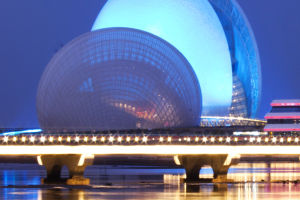New Zealand is a breathtaking island country located in the southwestern region of the Pacific Ocean. It consists of two main islands, the North Island and the South Island, along with several small islands such as Stewart Island and Campbell Island.
The capital of New Zealand is Wellington, while Auckland is the largest city in the country. New Zealand is renowned for its lush greenery, blue skies, and beautiful landscapes, which make it an ideal place to visit for nature lovers.
The North Island is characterized by its volcanic terrain, geothermal activity, and beautiful beaches. Some of the popular attractions include the Tongariro National Park, which is home to three active volcanoes, and the geothermal wonders of Rotorua, which features bubbling mud pools, hot springs, and geysers.
The South Island, on the other hand, is known for its stunning glaciers, fjords, and mountains. The Southern Alps run through the island, and it is home to several world-renowned national parks, including Fiordland National Park and Mount Aspiring National Park.
In the southern hemisphere, New Zealand welcomes the blooming cherry blossoms every spring. The streets, alleys, parks, and communities are full of blossoms, and with the bright sunshine and comfortable temperature, it is truly a spring day.
One of the most famous spots to enjoy cherry blossoms is Cornwall Park, which is known for its unique garden design and rich variety of plants.
Since the 1990s, cherry trees imported from all over East Asia have been planted in large numbers, and now in spring, the sky is filled with cherry blossoms, making it a popular place for spring excursions and picnics.
In the Mackenzie Basin on the South Island, the lupines usually start to bloom in the first or second week of November and gradually come into full bloom by the end of November.
The flowering cycle is usually at its peak in the first week of December and then declines rapidly by the end of December. The lupine flowers create a beautiful contrast against the ice-covered mountains, clear blue lakes, and stunning landscapes, making the Mackenzie Basin a popular destination for nature lovers.
There are two different stories about the origin of the lupine flower in New Zealand. The earliest one is that it was brought by Scottish immigrants. The other theory is from an enthusiastic lady from England who felt bored watching the cars coming and going on the deserted highway every day.
So, one day, she had the idea to plant lupine seeds on both sides of the highway, and the next summer, the beautiful lupine flowers bloomed.
Another popular local legend credits the lupine flowers to the wife of a local farmer, an Englishwoman who, perhaps to express her longing for her homeland, rides a white horse every spring and scatters bags of lupine seeds to the shores of the lake.
This story certainly adds to the allure of the shores of Lake Tekapo, where the rhubarb has taken root in the Mackenzie Basin, creating the beauty that is now Lake Tekapo.
New Zealand has a rich natural beauty that attracts visitors from all over the world. With its diverse landscapes, vibrant flora and fauna, and friendly people, it is no surprise that it is a popular travel destination.
Whether you are looking for adventure, relaxation, or simply a chance to connect with nature, New Zealand has it all.


